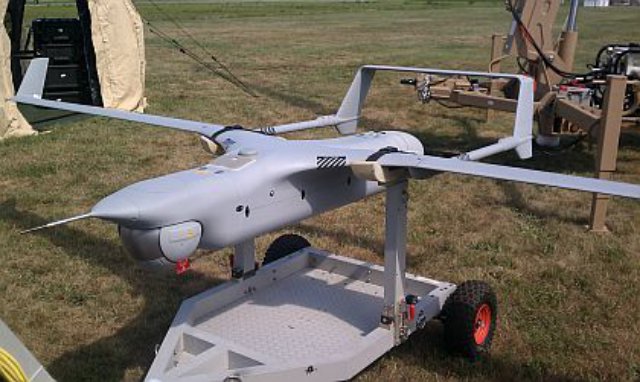 US Navy researches are asking industry to build sophisticated electro-optical sensor payloads small enough for small unmanned aircraft systems (UAS) like the Boeing Insitu RQ-21A Integrator, but with high-resolution and wide-area coverage, autonomous identification of objects, and other advanced capabilities.
US Navy researches are asking industry to build sophisticated electro-optical sensor payloads small enough for small unmanned aircraft systems (UAS) like the Boeing Insitu RQ-21A Integrator, but with high-resolution and wide-area coverage, autonomous identification of objects, and other advanced capabilities.
Scientists at the Office of Naval Research in Arlington, Va., issued a solicitation last week for the Spectral and Reconnaissance Imagery for Tactical Exploitation (SPRITE) programme (ONRBAA13-018), which seeks technology for an integrated payload with size, weight, and power consumption (SWAP) compatible with the RQ-21A UAS payload, and with advanced capabilities.
Specifically, ONR is looking for a small UAS electro-optical payload with very high sensor coverage in the shortwave infrared (SWIR) band; the ability to monitor a wide area continuously and with spatial and temporal resolution consistent with detection sensors used by infantrymen; and autonomous real-time identification of objects and materials.
While combined day and night solutions offer additional value, a nighttime sensor mode should not be designed at the expense of the other capabilities that ONR wants, officials say.
Sensors should be able to scan areas quickly that are at least as large as four square kilometers with sufficient spectral fidelity to identify explosives, sands, drugs, moving vehicles, and other materials of interest to deliver real-time actionable intelligence to warfighters on the ground.
Spectral sensors should have enough spatial resolution and location accuracy to acquire sub-meter spectral signatures and automatically cross-correlate those with other high-resolution sensor modalities, Navy researchers say.
ompanies interested may offer solutions involve large-format, small-pixel-pitch SWIR focal plane arrays; ways to collect spectral signatures; solutions that keep the number of bands collected to a minimum by using information from other sensor modes.
These sensors should not restrict how the UAS is flown; should not be limited observation stationary targets; should be able to monitor accurately targets moving at highway speeds; and should yield fused products ready for dissemination.
Navy researchers also want these sensors to monitor areas as large as 12 square kilometers for obstacles to manoeuvre, weapons, military vehicles, and other conditions of interest, using large-format focal plane arrays, power-efficient processors, and similar technologies.
Each sensor payload should include a very high resolution interrogation camera to characterize motion, behavior, and spectral characteristics of targets. On-board processing should enable real time accurate detection with novel algorithms for spectral and image processing, with reduced false alarms.
Proposals should involve modular open systems approach — as long as it doesn’t compromise performance or exceed SWAP constraints. Solutions will be integrated and tested as a payload for the RQ-21A UAS, which is seven feet long, has a 16-foot wingspan, and can fly as high as 15,000 feet.
A total of $32 million will be available for the program over the next five years, ONR officials say — $6.1 million in 2014, $7.6 million in 2015, $7.2 million in 2016, $6.5 million in 2017, and $4.4 million in 2018.
Companies interested must submit white papers online here no later than 18 July 2013. Full proposals are due by 14 Oct. 2013.
Source: Military & Aerospace Electronics
